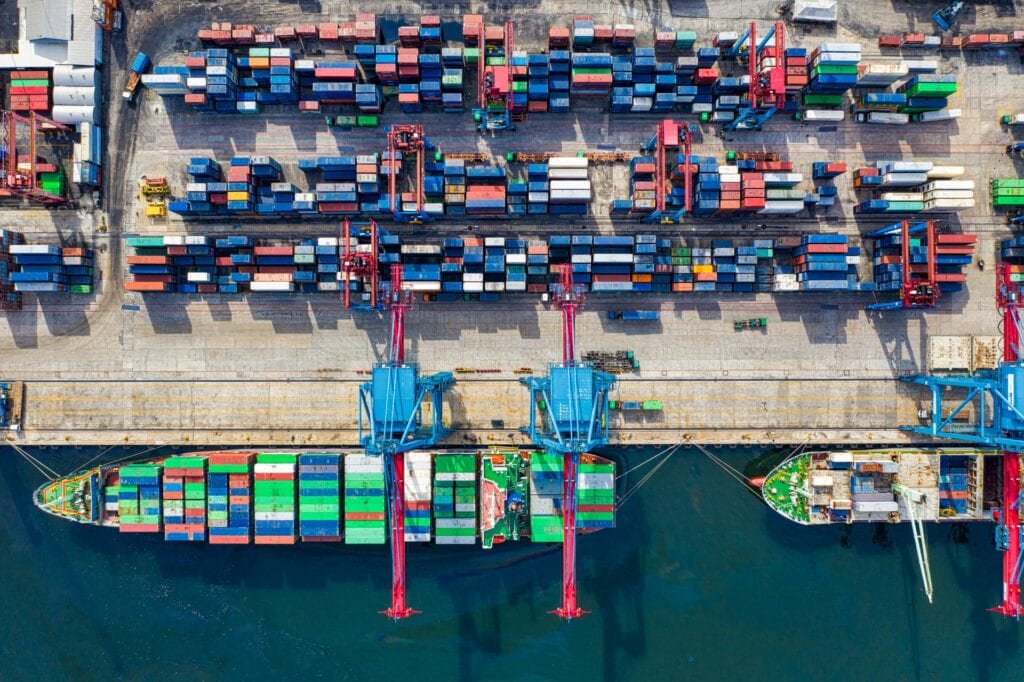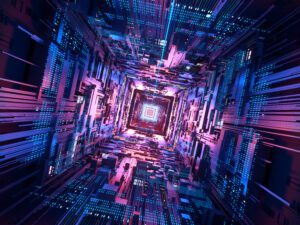
The global pandemic has had an unprecedented impact on supply chain networks around the world. Economy shutdowns, trade restrictions, and supply-demand shocks had exposed the vulnerabilities of our supply chain networks in 2020. As stretched as the industry had been in the early part of 2020, the credit to ongoing recovery and the fightback in achieving some certainty amid the “new normal” is bestowed on the supply chain professionals. Supply chain leaders have ensured the critical nervous system of our global economies is put back in place, as they have sought to maintain essential operations.
We meet with one such stalwart of the Supply Chain industry – Zoe Zhu, to quiz her on the future of SCM and how Schneider Electric is sailing safely through digitization as the rest of the sector continues to remain on tenterhooks. She speaks with us on the future supply chain trends to look forward to and how within Home and Distribution and Schneider Electric at large, our supply chain is transforming green.
Q&A with Zoe ZHU, SVP, Supply Chain & Quality at H&D division, Schneider Electric!

Zoe: Indeed, the pandemic has put the supply chain in the spotlight. The economic turmoil exposed many vulnerabilities in supply chains and raised doubts about globalization. Leaders everywhere started to take a fresh look at supply networks, take steps to understand vulnerabilities, and take actions to improve robustness.
For Schneider Electric’s Home & Distribution business, where we operate globally on all continents with more than 50 manufacturing and distribution sites, the impact on our business and operations was huge, as it was for many organizations.
The disruptions caused by COVID-19 simultaneously impacted all elements of supply chains. Let me provide several examples.
First, policies and consumer behavior have created unpredictable demand. Some products experienced surges in demand, while others saw major drops. We also saw eCommerce take a big leap in terms of growth.
Second, global shutdowns created uncertainty about supply flow and stability, with limited visibility to the flow of materials and unknown transportation scheduling.
Finally, operations were challenged, with production facilities experiencing intermittent closures, low capacity, and shortages in products, labor, and material.
However, thanks to fast actions by our global supply chain, our platforming approach in design and many of the business continuity plans created prior to the pandemic, we were able to react quickly and thereby mitigate the impact on most of our operations. For certain businesses in specific regions, where impacts were unavoidable, the pandemic triggered us to take very fast actions and prepare for a much more robust future. We swiftly activated end-to-end business contingency plans; duplicated necessary alternative production sites; activated qualification for second sources on critical components; invested in extra capacity to prepare for future growth; and accelerated digitization, even to the extent of having automation lines installed remotely with digital approaches.
I like to call this the “next normal” rather than the “new normal”. I believe this is a trigger for big change, but what is being changed will not become a long-time normal. We need to all be mentally prepared to be more resilient, flexible, and able to work with greater uncertainty because this will be one of many “next normals” to come.
Zoe: I would summarize with the following six key points:
Digitization
If there’s one thing during the pandemic that has allowed people to turn a crisis into an opportunity, it is digitization. The transformation from loosely connected sets of data, processes and people toward a fully integrated, end-to-end supply chain will significantly enhance visibility. Information-sharing and global data harmonization and standardization will shift today’s focus on putting out fires to tomorrow’s practice of predicting challenges so they can be prevented. We saw such a shift in our own operations and that of many other companies, as well.
New Technology & IOT
New technologies like 3D printing, 5G, low-cost sensors, enabled IOT and accelerated use of analytics and automation across the supply chain will keep evolving. Implementation of artificial intelligence and machine learning for predictive and prescriptive analytics will continue to accelerate, with broad-reaching effects across the end-to-end supply chain. Businesses that harness the power of big data and automation will have a competitive advantage in visibility, executional efficiency, quality and profitability.
eCommerce
The pandemic impact of consumers shopping online more than ever is forcing companies to create new and innovative last-mile delivery solutions. These include turning retail stores into fulfilment centers, delivery vehicles into pickup points and passenger vehicles into delivery vehicles. With consumers having more choices for how to receive their products, distribution centers and transportation hubs will move closer to key retail partners to enable better real-time tracking and logistics optimization.
Sustainability
The next normal will likely see a stronger push by customers and regulators for sustainability and reduced environmental impact. The ethical and ecological expectations of consumers will drive supply chains to determine how they source, produce and serve their products in sustainable and profitable ways. This could create challenges for the supply chain in many ways, involving costs, quality and product availabilities, which we will have to manage.
Resilience
“Resilience” will not happen on its own; it takes significant business resolve to make structural investment for the long term. To succeed in the next normal, companies will need more than tactical actions that address specific problems. The pandemic has already exposed gaps in many existing setups, and it may also drive long-term changes in customer requirements and behaviors. Companies will be expected to make transformational investments to be more resilient and future-proof.
People
Last but most important: people or, more accurately, the RESKILLING of people. With new technology trends, we will need to constantly reskill our talent pipeline in order to meet evolving customer and industrial requirements. This means we need to upgrade the current expert pool with new skills, while also recruiting digital natives to play key roles in our supply chain transformation. The best talent pipeline is a healthy mix of experienced experts and new digital natives that can collectively maximize our output.
Zoe: The Home & Distribution supply chain team is instrumental to realizing our company’s commitment to sustainability. We look at the supply chain end to end, from making the right raw material choices, to sourcing components, to manufacturing finished goods with the right processes, to designing the best carbon footprint supply chain, right up to delivery to the door of our end customers.
Several initiatives are already in place:
– For the last 2 years, we ensured for ALL our new project launches, established mandatory specifications that the design of all our supply chain flow to aim at most optimal reduction of carbon footprint;
– For all our new offer launches, we already implemented 100% green packaging and zero single-use plastics. The White to Brown packaging program also rolled out to all the existing offers. Our products are using QR code to replace paper manuals, we applied recycled carton box packaging, and change PE bag to biodegradation bag…
– Our Connected Living North Hub team developed innovative product by using Ocean Plastics (eg. fish-net), reaching carbon-neutral objective by reuse of ocean plastics, while also protecting wildlife’s. We will launch the first ocean plastic products this year in Europe, we are also partnering with our strategic supplier to launch this in scale globally.
– Schneider Electric is leader in Sustainability and Energy Efficiency, we were recently listed by CorporateKnight as the #1 most sustainable company in 2021 Global 100. For H&D, we lead in applying green plastics in order to reach our group commitment to have 50% of green material content in our products. For our Final Distribution Line of Business, we will already launch this year in Nordic countries, fully green-plastic-ready products.
– We are global leader in Sustainability, but we will not do it on our own. Our role is to take an end-to-end approach and engage with our customers, our suppliers, and our own manufacturing facilities to achieve our sustainability goals. We believe the only way to reach these goals faster is to build a partner eco-system and lead the transformation together through a shared commitment to social responsibility.
Zoe: To succeed in the next normal, we will need to stay focused while keeping a very agile mindset to tackle greater uncertainties. We need to tackle ongoing supply crises, such as the plastics shortages, electrical components famine, and tight global transportation we experienced in the past months. At the same time, we must look far ahead and far broader to prepare a resilient and robust supply chain for the future.
For our Home & Distribution supply chain in particular, this means:
-
Proceeding with the preparation and execution of our Business Contingency Plan;
-
Proceeding further on our digitization journey;
-
Working closely with Line of Business and Global partners to orchestrate an end-to-end collaborative and bullet-proof supply chain;
-
Strengthening our talent pipeline, RESKILLING competencies needed for future, and accelerating the digital supply chain.
As 2021 unfolds, our goal is to stand out stronger than ever before and be even better prepared for the next normal!
Did you find the conversation informative? Make sure to follow Zoe ZHU on LinkedIn!



